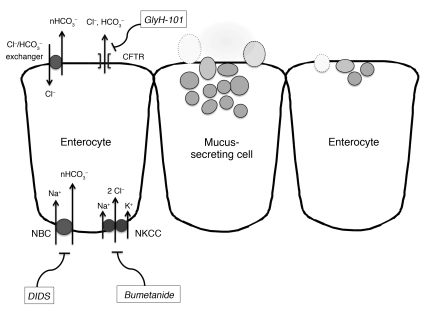Figure 10. Conceptual arrangement of mucus cells and enterocytes with components of Cl– and HCO3– secretion and corresponding inhibitors.
In general, HCO3– is thought to be taken up across the basolateral membrane mainly via NBC, which is inhibited by DIDS. HCO3– exits the cell across the apical membrane, possibly via a CFTR-dependent Cl–/HCO3– exchanger (also DIDS sensitive) or directly through the CFTR anion conductive channel that is inhibited by GlyH-101. Fluid secretion is dependent upon the uptake of Cl– via the NKCC in the basolateral membrane, which is inhibited by bumetanide and on CFTR (or other Cl– channels not shown) in the apical membrane. Thus, DIDS should block HCO3– secretion, and bumetanide should block fluid secretion. GlyH-101 is expected to inhibit both CFTR-dependent fluid and HCO3– secretion either directly by blocking CFTR conductance or indirectly by inhibiting a CFTR-dependent Cl–/HCO3– exchanger (65). The diagram intentionally suggests close proximity of HCO3–-secreting enterocytes, with mucus-secreting goblet cells and possibly enterocytes as a means of maintaining ample HCO3– in the immediate environment of secreted mucin granules. In CF, defunct CFTR would starve the environment of HCO3–.

